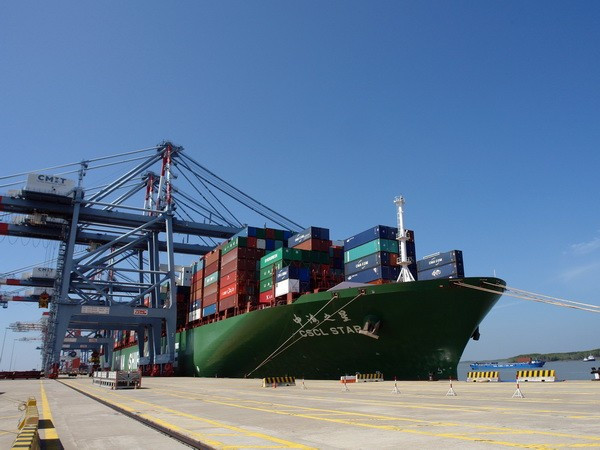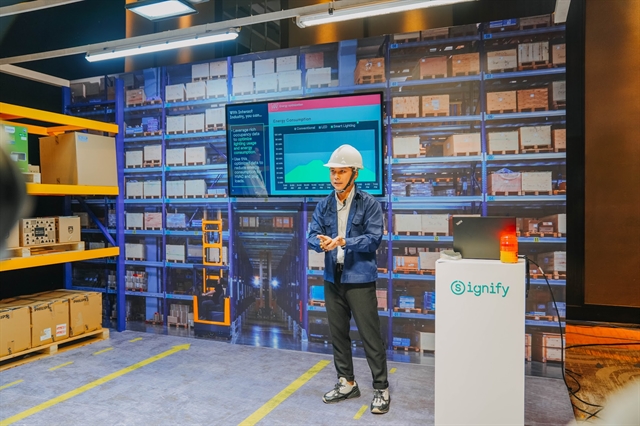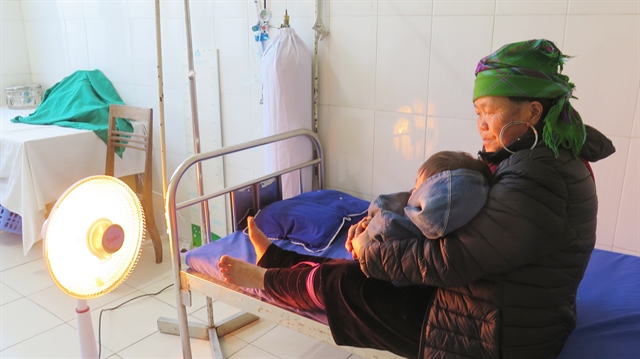 Economy
Economy


|
| Participants discuss solutions to reach the net zero target at the Signify Innovation Day 2023 themed "Green Switch’’ in HCM City on Wednesday. — Photo courtesy of Signify Vietnam |
HCM CITY — Dutch businesses are committed to supporting Việt Nam in achieving the country’s net zero emissions target by 2050, confirmed the Dutch Business Association in Việt Nam.
At the Signify Innovation Day 2023 themed "Green Switch’’, which was organised in HCM City on Wednesday, Guido van Rooy, executive director of the Dutch Business Association in Việt Nam, said Dutch companies will actively facilitate this effort by providing a platform for knowledge exchange, collaborative initiatives, and strategic partnerships.
“By leveraging these resources, Dutch businesses operating in Việt Nam can jointly adapt their strategies and actions to the Vietnamese market. This concerted effort demonstrates our dedication to environmental responsibility and fosters a strong and mutually beneficial relationship between the two countries,” he said.
Participants discussed Việt Nam’s sustainable development and how Dutch businesses in the country can help pave the way for a greener future.
Speakers and participants strongly agreed that the commitment to “zero net emissions” needs to be realised by balancing economic development and resource protection.
The discussion also touched on potential solutions from large enterprises, including a focus on lighting technologies, which allow stakeholders and industry leaders to see how green lighting solutions can lead to more sustainable development.
Sharing at the event, Phùng Hoài Dương, general director of Signify Vietnam, said that switching from traditional lighting systems to LED lighting systems presents a substantial opportunity for cost savings.
“The transition is estimated to result in an 80 per cent reduction in electricity, equivalent to cutting hundreds of tons of CO2 and saving VNĐ6.3 million (US$260) for each tonne of CO2 cut. Residential areas, in particular, stand to benefit from a potential reduction of 276 tonnes of CO2 emissions, saving over VNĐ1.7 trillion ($70 million),” he said.
The savings are in line with the Government’s call for reduced electricity use of 2 per cent annually and power losses in transmission lines to less than 6 per cent by 2025. By 2030, at least 50 per cent of all office and residential buildings should use rooftop solar power and only LED bulbs should be used in street lights by 2025.
“By converting from traditional lighting systems to smart lighting systems, not only large businesses but also domestic and foreign individuals and organisations can contribute to the goal of green growth.
In addition, partnering with companies that have achieved carbon neutrality will create a greater competitive advantage to help businesses meet emissions targets, including all indirect emissions throughout the entire supply chain, while promoting customer trust and loyalty. This, in turn, attracts high-level talent, thereby increasing competitiveness in many fields from business to export, Dương told the event.
During the event, participants were introduced six light innovations which promote the pioneering journey of green transformation.
One of the six is smart office lighting with connected LED lights, integrated sensors and interact office software, which enhances workspaces by providing detailed data on occupancy, space optimisation and savings.
Technology that simulates natural sunlight was also introduced. The innovation helps improve health and development by supporting the body's circadian rhythm, keeping a person active during the day and well-rested at night.
Another solution is artistic lighting and enhancing public beauty with the Interact Landmark system that helps control light remotely, suitable for day and night needs, saving up to 30 per cent energy at night when the road is empty or as needed.
By controlling street lighting with remote management capabilities, the system allows users to easily maintain and monitor the entire system. In particular, with accurate data from the system, users can also adjust lighting to suit each area. In addition, solar street lights help reduce carbon emissions by taking advantage of solar energy and can turn lights on and off automatically based on the actual light source.
The other solutions are industrial lighting and smart lighting for homes. — VNS




